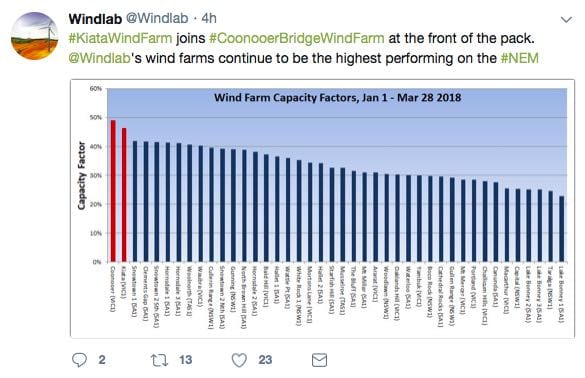Two new Australian wind farms are nearing capacity factors of 50 per cent – and are the best performing wind farms in Australia, according to their owner, Windlab.
Windlab tweeted the above graph on Tuesday, showing that the 20MW Coonooer Bridge wind farm in Victoria, and the newly-opened 31MW Kiata wind farm, also in Victoria, were delivering capacity factor ratings in excess of 45 per cent.
Respondents on social media were quick to point out that this was nearly as good as the Liddell coal fired power station, which delivered a capacity factor of 49 per cent in 2016/17, and which had two units closed for most of the period highlighted above.
Windlab CEO Roger Price told RenewEconomy that the results were pretty much as expected, and reflected both the company’s own wind resource technology, and the development of wind turbines, which are getting bigger and more able to generate power at lower wind speeds
Coonooer Bridge installed Vestas turbines with 117m diameters, Kiata included Vestas turbines at 126m diameters, while the Kennedy energy hub – featuring wind, solar and battery storage – will also aim for high 40 per cent rating with 3.6MW turbines and 135m diameter blades.
“This is up where we expected it to be,” Price told RenewEconomy. They are doing very well. These are smaller projects, but they are amongst the best wind resources in Australia.”











